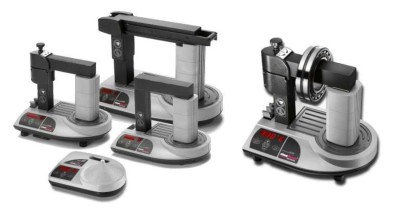Fire is the heat energy released after a chemical reaction. Fire happens when three components are present: fuel, oxygen, and heat. Creating a fire and transferring heat energy is only possible with these three factors.
Although fire is one of the most important discoveries of humans, it still has some disadvantages as it depends on external factors and has an irregular transfer of heat at points in contact with the fire. It can cause a problem when a metal is heated for work like forging, where uneven heat distribution can damage the forging equipment.
Induction heating is a fire-free, non-contact method of heating metals in which electrically conductive material can be heated by placing it within an alternating magnetic field. An induction heater mainly consists of a work coil connected to a high-frequency power supply, circuits, and a workpiece. The workpiece is made of a conductive material such as copper, aluminum, or steel, semiconducting materials such as silicon, carbon, or graphite, and non-conductive materials such as plastics or glass.
A high-frequency current runs through the coil when the induction heater turns on and creates a magnetic field surrounding the coil. When the magnetic field penetrates the electrically conductive material (metal) placed inside the coil, the currents are induced into the part's surface and release heat.
When currents flow inside the material, they experience resistance toward flow and cause the material to heat up. Following the law of electromagnetism and Joule’s heating, induction produces heat in the workpiece. The coil never touches the workpiece, and the heat is generated by the induced current flowing in the workpiece.
For heating non-conductive materials such as plastics or glass, an electrically-conductive susceptor, e.g., graphite, is used to pass the heat to the non-conducting material.
The main advantage of induction heaters is their efficiency, as they can transfer heat with high efficiency. The efficiency of an induction heater is more than four times better than heating generated from fire. In addition, an induction heater only gives heat to the parts needed, not the whole workpiece. Also, an induction heater is safer as there is no flame.
Induction heaters are used in pre and post-heating, brazing, hardening/tempering, welding, straightening, melting, forging, and many other applications. Induction heating finds applications in processes where temperatures are as low as 100ºC (212°F) and as high as 3000°C (5432°F). Induction heaters are also used in short heating processes lasting less than half a second and in heating processes extending over several months.
HVH Industrial Solutions offers a wide range of induction heaters, from small handheld precision and portable to bearing induction heaters and, finally, induction heating generators.
Feel free to visit HVH Industrial Solutions if you have any questions, need more information, or are interested in purchasing an induction heater.
Also, you can check our Engineering Blog for more informative articles.









